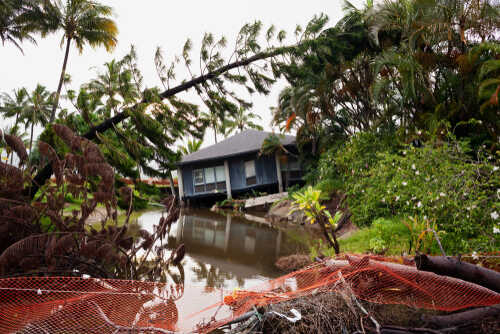(LibertySociety.com) – President Trump’s decision to release FEMA funds to several states months after disasters swept through, while surprising, might just be the pivot point in the ongoing debate over federal disaster management.
At a Glance
- Trump releases FEMA funding for states months after disasters.
- Shift in policy reflects ongoing debate over federal vs. state responsibility.
- FEMA’s role reduced to supporting rather than leading in disaster response.
- Long-term implications for U.S. emergency response frameworks remain uncertain.
Trump’s FEMA Funding Decision
President Donald Trump announced the release of Federal Emergency Management Agency (FEMA) funds to Indiana, Michigan, Kentucky, and West Virginia. These states faced severe weather events earlier this year, with tornadoes, ice storms, and floods causing significant damage and loss of life. The decision marks a departure from Trump’s previous stance, where he advocated for minimizing FEMA’s role in disaster response, pushing states to take the lead instead. This shift comes after widespread criticism of the administration’s handling of the catastrophic Texas floods that claimed over 130 lives.
This move, while welcomed by state leaders, reflects a broader shift in disaster management policy. Trump’s administration, previously critical of FEMA’s efficiency, now emphasizes a supportive role for the agency, providing financial aid rather than direct management of disaster response efforts.
Stakeholders and Power Dynamics
The decision to unlock federal funds impacts several key stakeholders. State governors, including Gretchen Whitmer of Michigan and Mike Braun of Indiana, have expressed gratitude for the aid, although some noted delays in receiving the funds. FEMA, under the direction of Secretary Kristi Noem, continues to play a role in coordinating recovery efforts, albeit with a reduced leadership position. Disaster-affected communities, the most directly impacted, rely heavily on this federal aid for recovery. The debate over the federal versus state responsibility in disaster management continues, with Trump’s administration advocating for a model where states are at the forefront, supported by federal resources.
While Trump retains executive authority, he faces political pressure from both disaster-affected states and critics concerned about the implications of reduced federal oversight in disaster management. Congressional delegations from affected states can apply legislative pressure to influence the administration’s policies.
Current Developments and Impacts
Federal disaster funds are currently being disbursed to Indiana, Michigan, Kentucky, and West Virginia, aiding recovery efforts from the severe weather events earlier this year. Trump’s announcement on July 23, 2025, followed the catastrophic Texas floods, which highlighted significant issues in FEMA’s response capabilities. The administration’s shift in rhetoric, from eliminating FEMA’s role to emphasizing a supportive function, suggests a reevaluation of disaster management strategies.
Short-term, this funding provides immediate relief for affected communities, supporting temporary housing, infrastructure repair, and compensation for uninsured property losses. Politically, the aid boosts Trump’s standing in the affected states, as governors publicly thanked the administration. Long-term, however, this policy shift could lead to a restructuring of U.S. disaster management, with states taking on greater responsibility. Concerns remain about potential disparities in state capacity and preparedness should federal oversight be reduced.
Expert Perspectives and Broader Implications
Emergency management experts warn that reducing FEMA’s role could lead to uneven disaster response across states, as resources and expertise vary significantly. While some policy analysts support the call for FEMA reform, they caution against an abrupt withdrawal of federal leadership, which can be crucial during major disasters. Proponents of state-led disaster response argue it encourages local resilience and investment, though critics contend that many disasters exceed state capabilities, necessitating robust federal intervention.
The broader debate over FEMA’s future could reshape the U.S. emergency management landscape, influencing funding, preparedness, and intergovernmental coordination. As this policy shift unfolds, its long-term impact on disaster response and recovery frameworks remains a critical area of focus for policymakers and disaster management experts alike.
Copyright 2025, LibertySociety.com .
Click this link for the original source of this article.
Author: Editor
This content is courtesy of, and owned and copyrighted by, https://libertysociety.com and its author. This content is made available by use of the public RSS feed offered by the host site and is used for educational purposes only. If you are the author or represent the host site and would like this content removed now and in the future, please contact USSANews.com using the email address in the Contact page found in the website menu.








